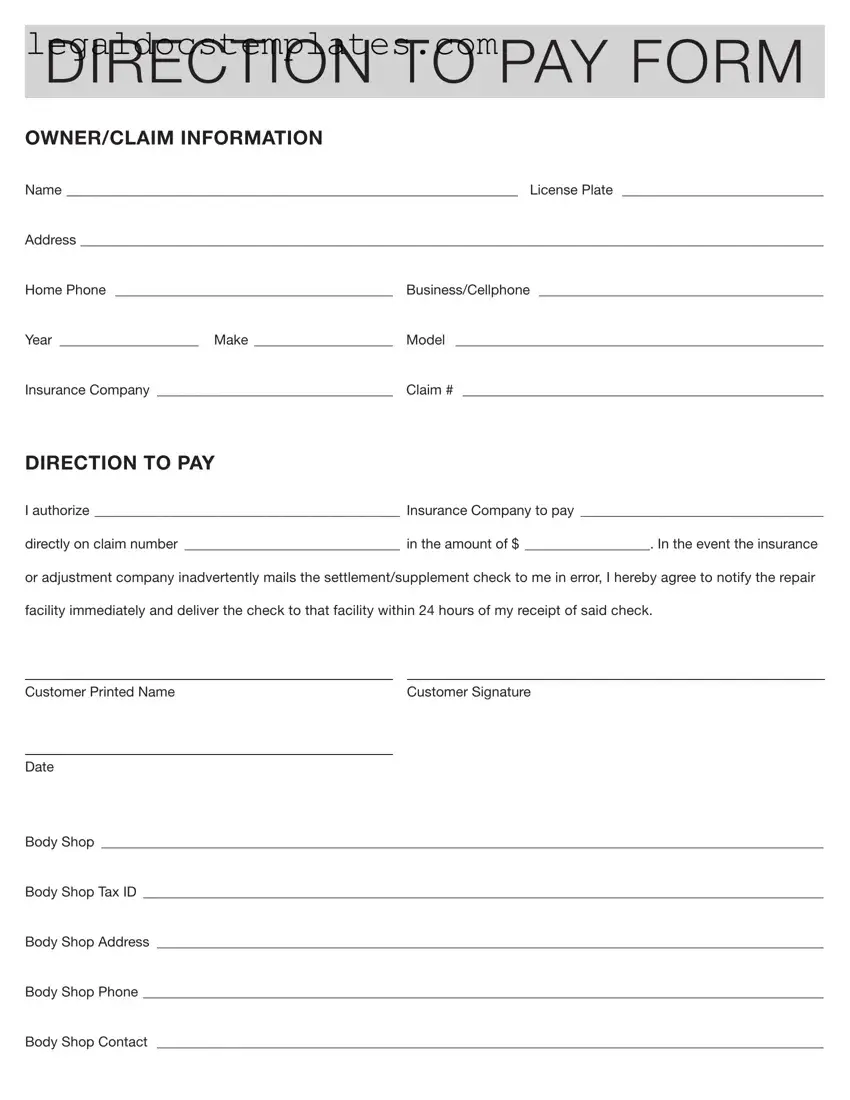The Authorization And Direction to Pay form is quite similar to a Power of Attorney (POA) document. Both enable individuals to grant others the right to act on their behalf. While a POA can cover a broad range of actions, the Authorization And Direction to Pay form is more specific, allowing an insurance company to pay a third party directly for claims related to vehicle repairs. In essence, this form is a specialized type of POA focused solely on the transactions between insurance companies, vehicle owners, and repair facilities.
An Assignment of Benefits (AOB) form shares common features with the Authorization And Direction to Pay form as it also involves directing payment to a third party. Under an AOB, an individual assigns their right to receive benefits from an insurance claim to a service provider. This is notably similar to how the Authorization And Direction to Pay form works, which designates payment from an insurance claim directly to a repair shop, streamlining the process for all parties involved.
The Release of Claim form is another document that resembles the Authorization And Direction to Pay form. This document is used when a claimant agrees to accept a particular settlement amount and releases the insurance company or the party at fault from further claims related to the incident. While the Release of Claim form finalizes the claim from a liability standpoint, the Authorization And Direction to Pay form focuses on the logistic and financial aspect of fulfilling the claim through a third-party payment.
Lien Authorization forms closely parallel the Authorization And Direction to Pay form, particularly in situations involving vehicle repairs. When a vehicle is repaired under an insurance claim, and a lien is placed on it until payment is received, a Lien Authorization form might be used to ensure the repair facility gets paid directly by the insurance company. This approach simplifies the process, ensuring the lien is lifted promptly once the repair facility confirms payment, similar to the assurances provided by an Authorization And Direction to Pay form.
A Third-Party Authorization form, often used in financial or healthcare settings, grants a designated party authority to act in specific capacities on someone else's behalf. Like the Authorization And Direction to Pay form, it facilitates transactions or decisions that would otherwise require direct action from the principal party. Both documents simplify the process of authorizing someone else to manage specific tasks, ensuring that the intended actions, like payment handling, are executed efficiently.
The Payment Authorization form is likely the most directly comparable document to the Authorization And Direction to Pay form. This document also authorizes a payment to be made, often specifying the payment method and details. The key similarity lies in their primary purpose: to ensure that payments are processed according to the wishes of the person authorizing the payment. Both forms serve to facilitate transactions and specify the payee, albeit in slightly different contexts.
Finally, the Letter of Authorization for bank transactions shares similarities with the Authorization And Direction to Pay form by permitting specific financial transactions to proceed on behalf of the account holder. This letter serves a broad range of uses, from authorizing a one-time bank transaction to setting up automatic payments. While its scope may be wider, the core function mirrors that of directing payments in a controlled, authorized manner, reflecting the essence of what the Authorization And Direction to Pay form seeks to achieve.

